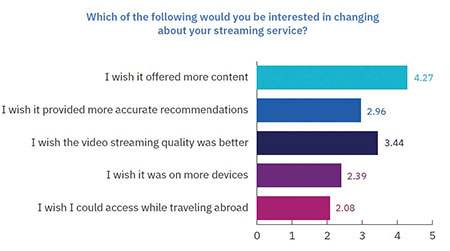Growing Pains for OTT
A little over 10 years ago, Netflix launched its streaming service, effectively heralding the dawn of over the top services. A decade later, OTT is closer to becoming ubiquitous amid predictions that it will eventually overtake cable and satellite as the dominant source of video news and entertainment. The march towards an all-OTT future, however is not without a few bumps.
Perhaps the most popular quality that characterizes OTT is the explosion of content choices now available on a plethora of devices. But with the increased choice comes some risks. These issues were outlined in several recent reports assessing the current state of OTT.
In its “State of the Broadcast Industry 2018” report, media software provider Ooyala examines how streaming services have affected viewer behavior and where broadcasters fit into this expanding universe. The report, which uses Ooyala’s own data and analysis as well as research conducted by other organizations, concludes that technical issues such as buffering times combined with what some consider “too many” choices will drive important changes in the coming year.

Viewers voice their technical concerns in IBM Cloud Video’s “The State of Streaming” report.
The report notes that Ericsson predicts that by 2022, mobile video viewing will account for 75 percent of mobile data traffic. Ooyala also noted that by 2020, OTT viewing will surpass traditional broadcast TV viewing, according to a recent report from Unisphere.
In its report “The State of Streaming,” IBM Cloud Video surveyed more than 1,000 U.S. consumers and found that technical issues were among the most common complaints among subscription video-on-demand (SVOD) subscribers, with 75 percent of respondents experiencing buffering or delayed starts in 2016, with that figure rising to 81 percent in 2017. One contributing factor cited in this issue is sudden spikes in viewership, e.g., when Netflix releases the latest season of “Stranger Things” on a given date and time. Such spikes can also affect video quality and lead to audio-syncing issues as well.
“Streaming services need to be ready to host the millions of viewers who tune in at the same time,” the report’s authors noted. “Streaming services need to leverage technology that supports streaming and on-demand distribution across various platforms at top speeds. Without a scalable architecture that can handle massive spikes and facilitate processing and delivery, streaming services will not be able to accommodate increased demand,” resulting in lost subscribers, the report concludes.
How do broadcasters fit into the OTT environment? We already have the advantage when it comes to having the capacity to handle popular live events, but as compression and bandwidth availability continues to improve, OTT could eventually match it. The unknown variable in all of this is the fate of net neutrality, which, although repealed by the FCC late last year, is being challenged in courts and Congress. These developments are forcing us to re-assess our role in today’s media landscape, where OTT’s strengths in personalizing viewing choices are challenging broadcast’s expertise in delivering the live mass viewing experience.
Nevertheless, with the approvals in 2017 of the SMPTE-2110 video transport and the ATSC 3.0 hybrid IP-broadcast standards and the increased adoption of the cloud for production and distribution, our industry is better prepared than it was just 12 months ago. Whether it’s enough to survive in an OTT future is up for debate.
Get the TV Tech Newsletter
The professional video industry's #1 source for news, trends and product and tech information. Sign up below.
Tom has covered the broadcast technology market for the past 25 years, including three years handling member communications for the National Association of Broadcasters followed by a year as editor of Video Technology News and DTV Business executive newsletters for Phillips Publishing. In 1999 he launched digitalbroadcasting.com for internet B2B portal Verticalnet. He is also a charter member of the CTA's Academy of Digital TV Pioneers. Since 2001, he has been editor-in-chief of TV Tech (www.tvtech.com), the leading source of news and information on broadcast and related media technology and is a frequent contributor and moderator to the brand’s Tech Leadership events.

